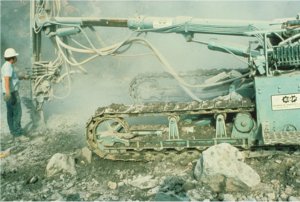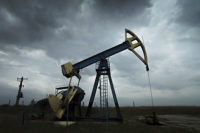 Silica, often referred to as quartz, is a very common mineral. It is found in many materials common on construction sites, including soil, sand, concrete, masonry, rock, granite, and landscaping materials.
Silica, often referred to as quartz, is a very common mineral. It is found in many materials common on construction sites, including soil, sand, concrete, masonry, rock, granite, and landscaping materials.
The dust created by cutting, grinding, drilling or otherwise disturbing these materials can contain crystalline silica particles. These dust particles are very small. You cannot see them. This respirable silica dust causes lung disease and lung cancer. It only takes a very small amount of airborne silica dust to create a health hazard.
Recognizing that very small, respirable silica particles are hazardous, OSHA regulation 29 CFR 1926.55(a) requires construction employers to keep worker exposures at or below a Permissible Exposure Level (PEL) of 0.1 mg/m3). NIOSH has a lower Recommended Exposure Level (REL) of 0.05 mg/m3.
To learn more about the hazard:
Silica Exposure (video), WorkSafe BC
OSHA eTOOL: Silica – Frequently Asked Questions
CALOSHA Hazards of Silica in Construction etool
“Crystalline Silica Primer,” U.S. Department of the Interior
Silica Manager for the Construction Industry, Georgia Tech's Safety and Health Consultation Program.
Source: www.silica-safe.org
Photo: Silica exposure due to an unsafe work practice. Photo by NIOSH/John Rekus.



